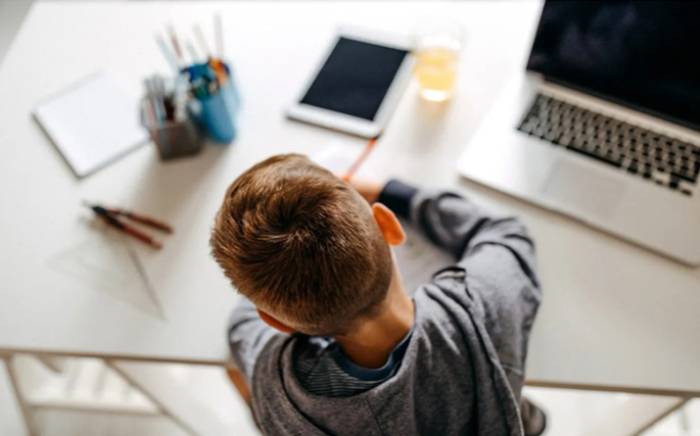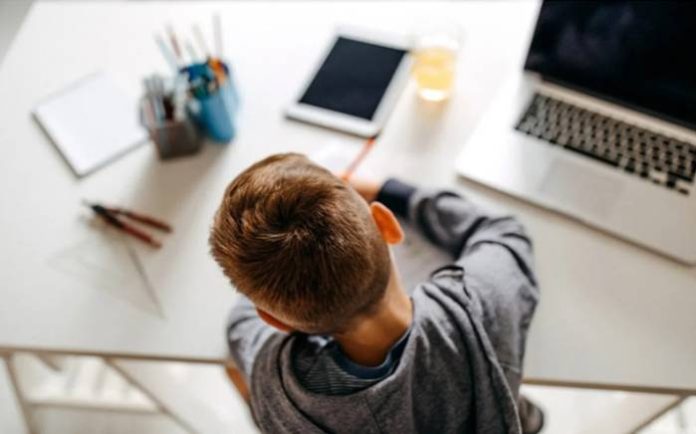A personal secluded workspace is like a castle of comfort and safety for every child; it is a place where they can do their assignments, organize their thoughts, or just be alone.
A workspace for children is created in collaboration – parents define the fundamental things, and children come up with the final decision. Oftentimes we only concentrate on the beauty and attractiveness of the place neglecting its comfort and usability. So, what are the most critical things to consider when creating a child’s workspace? Let’s follow the guidelines.

What Are the Most Important Things to Plan?
#1. Location
The choice of location is the first step towards setting up a perfect place. Although we typically consider a workspace as a part of a kid’s room zoning, it’s not always the case. Some children fail to work in their bedrooms, as it is the place for sleep; some are constantly checking the snacks in the kitchen, wasting time for the constant migration; some feel comfortable only with parents by their side working, etc. Such details are essential when planning a work-dedicated space.
The selection of a place starts with proper observation – parents should watch a child for some time and define the spots where they tend to spend time – their own room, a parent’s study, a balcony, a kitchen, etc. After defining the list of places, it is necessary to ask the kids for their opinions and choose the best place together.

#2. Design
What makes a child’s workplace different from an adult’s? Its design, accessories, and freedom of expression. Adultish style looks more formal, often cluttered with work-related necessities, and lacking the legerity and fun.
Children should be responsible for the design of their workspace:
- If it is a part of their bedroom, it can be marked with specific wallpapers, cartoon pictures of their favorite heroes, carpets, rugs, etc. There should be no pressure regarding the choice of characters, actors, gamers, bloggers, or singers for the design.
- If the workspace is a part of a living room or a study, it can also be marked with specific pieces of decoration, to mark the ‘privacy’ of the owner.
- Provided it is not possible to make changes to the walls, getting a pinboard will be the best solution, as it can contain everything that the child wants to see, as well as help to change the decor regularly, without global changes.
Although parents shouldn’t impose their view of design but offer the choice to kids, they certainly need to teach them to balance – overly decorated places will not create the space for concentration, and bland spaces will also look poor, and aloof.
#3. Furniture
If you notice that your kid keeps fidgeting while doing homework, it is not always an indication of being a demotivated student, but the physical discomfort of the chair. Uncomfortable seating doesn’t let the kid concentrate, as the only thing they care about is getting over the list of tasks as soon as possible, neglecting the quality of their performance.
An efficient workspace requires a properly chosen desk and chair designed specifically for kids. Besides, it is important to let the kid choose the right one among a few suitable options.
While it is a good idea to check all the options online, comparing the characteristics and prices, the final deal should be performed after the kid chooses a physically comfortable chair.
#4. Lighting
A well-lit place is a healthy choice, as it ensures a safe studying environment for the eyes, and thus, increases productivity. There should be two sources of light – the ambient lighting and the task lighting.
While the ambient lighting is chosen according to the style of the room, the task lighting is better chosen by the kid, considering preferences.
#5. Storage
The workspace of a student requires a miscellaneous of things and equipment, and thus, enough space for storing them. These can be separate shelves, the cupboards, the drawers, file boxes, organizers, etc. The storage items should be chosen to cover the needs of the kids and complete the whole vision of the workspace. Apart from the choice of storage items, it is important to teach kids to actually use them accordingly (as much as possible).
#6. Flexibility
Kids are all different and often unwilling to study or keep their things organized, despite all our good intentions and efforts. Therefore, it is important to be flexible and choose rather unordinary approaches.
For instance, instead of doing homework at home, you can take a kid to a favorite cafe, and let them study there. The white noise of a place will help them concentrate better, and do away with homework faster than at home. Some may enjoy outings to the park, spending time in the library, doing homework with classmates, etc. The workspace can be often changed, to avoid the routine and bring novelty to the process. After getting bored with the cafe or library, the homey workspace may seem the most comfortable place in the universe.
The Bottom Line
Having a personalized workspace is key for children’s productivity. It helps the kids enter a ‘working’ mood, concentrate on the tasks, and organize their performance.
When setting up a place for children, it is critically important to consider their opinions so as not to cause any further resentment. If you work together, the child will get a snuggish place for work, while the parent will have peace of mind.







































